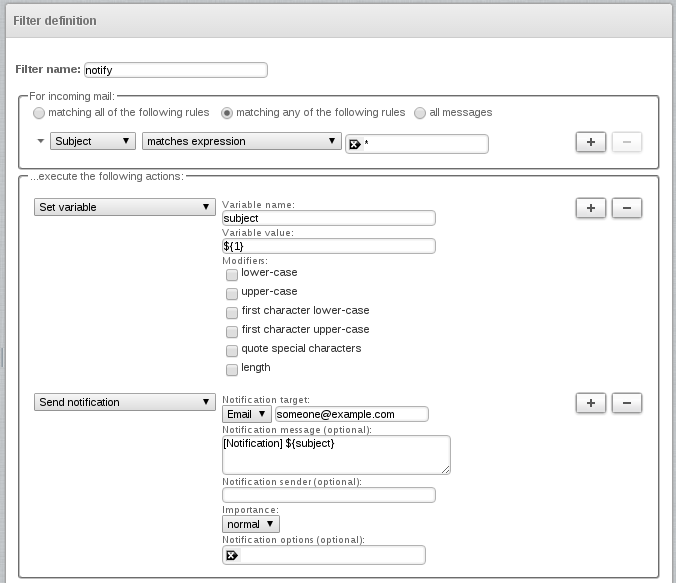Sieve-Example:Notify: Difference between revisions
Appearance
Content deleted Content added
mNo edit summary |
mNo edit summary |
||
| Line 2: | Line 2: | ||
[[File:Sieve-roundcube-notify.png|Roundcube screenshot]] |
[[File:Sieve-roundcube-notify.png|Roundcube screenshot]] |
||
If you can edit the sieve filter manually, then you can |
|||
<syntaxhighlight> |
<syntaxhighlight> |
||
# rule:[notify] |
# rule:[notify] |
||
if header :matches " |
if header :matches "Subject" "*" |
||
{ |
{ |
||
set "subject" "${1}"; |
set "subject" "${1}"; |
||
| ⚫ | |||
} |
} |
||
if header :matches "From" "*" |
|||
{ |
|||
set "from" "${1}"; |
|||
} |
|||
| ⚫ | |||
</syntaxhighlight> |
</syntaxhighlight> |
||
Revision as of 14:38, 19 September 2016
Send a notification email to another mailbox when the mailbox gets an email:
If you can edit the sieve filter manually, then you can
# rule:[notify]
if header :matches "Subject" "*"
{
set "subject" "${1}";
}
if header :matches "From" "*"
{
set "from" "${1}";
}
notify :importance "2" :message "[Notification] ${from}: ${subject}" "mailto:andrew@aa.net.uk";This sets a variable of the subject, and then sends an email to another mailbox using the subject line.
